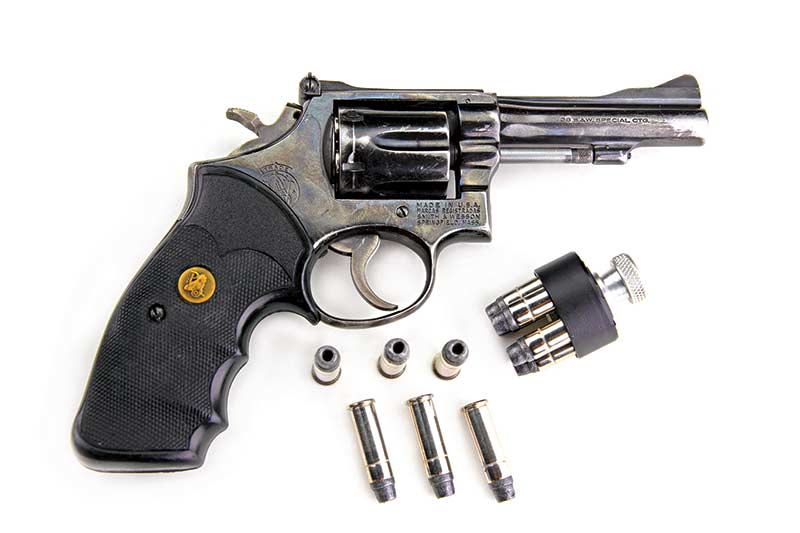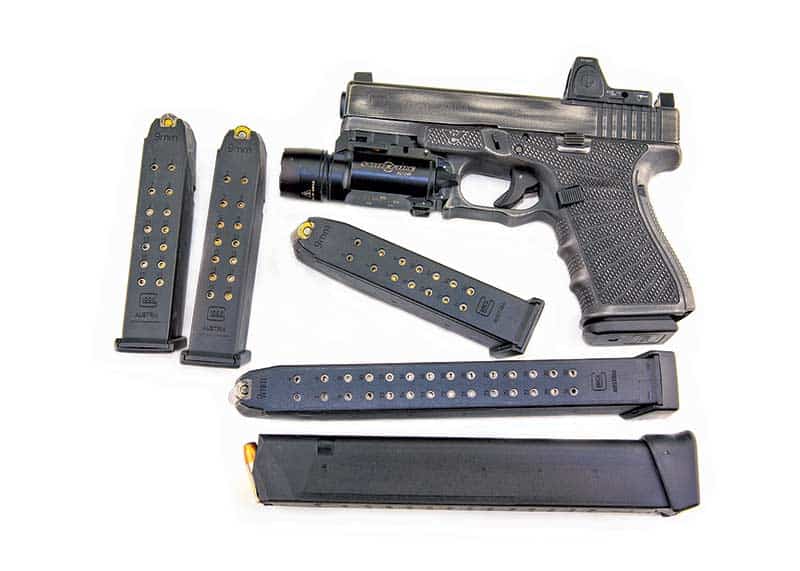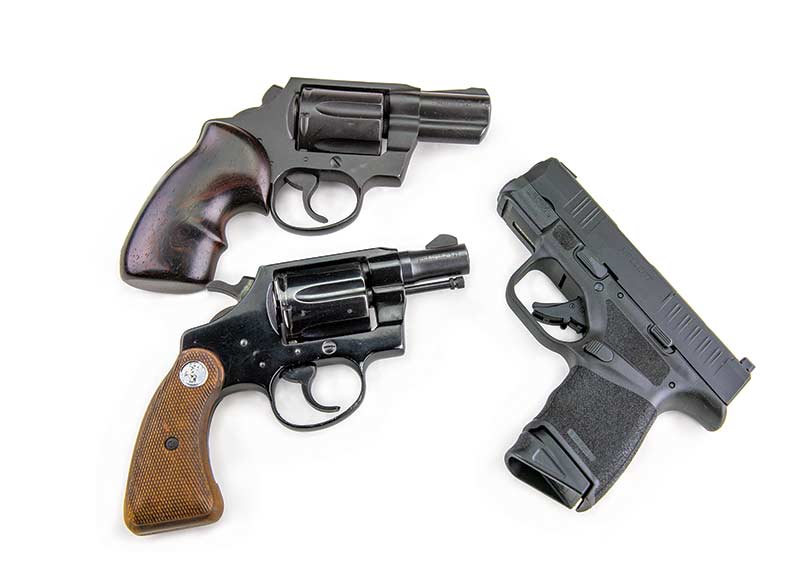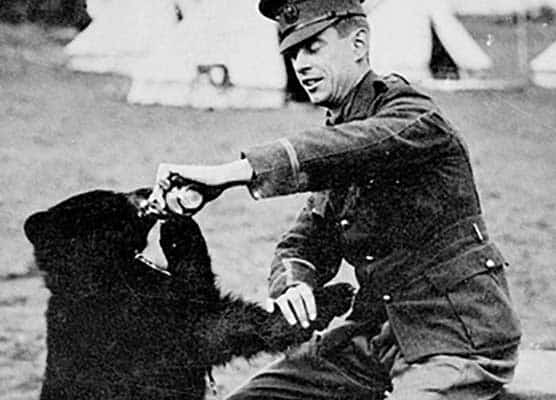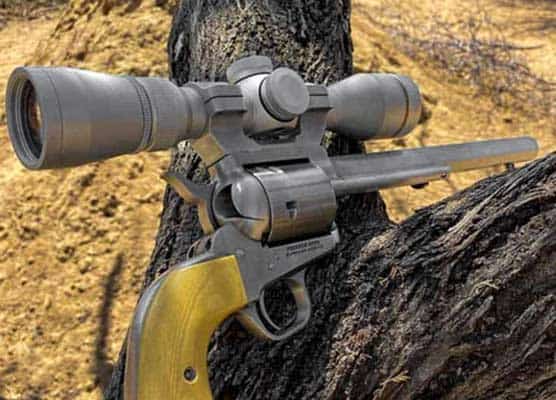Ammo Loadout
Cops carry more ammo today than in yesteryear. Is there such a thing as too much?
Back when I started out, the department issued an S&W Model 10 six-shot .38 Special revolver and a double-dump pouch — each cell of which held six loose cartridges. Eighteen rounds. A loaded gun with two full reloads.
In his famous gunfighting book, No Second Place Winner, my mentor Bill Jordan appears in his U.S. Border Patrol uniform with a loaded S&W Model 19 .357 Combat Magnum and a belt slide with only six cartridge loops. One Southwestern state police agency of the time issued a Model 15 and six spare rounds, also in belt loops. And there were some detectives — and chiefs — whose stereotype weapon was a snub-nose .38 with no spare ammo on their person.
Time rolled on. The Illinois State Police were the first troopers to get autoloaders as standard issue, the S&W Model 39, in 1967. It was considered radical at the time. Initially, they were not issued spare magazine carriers at all. Heck, they could fit nine whole rounds of 9mm Luger into the pistol; who could need more than that? Well, experience answered that question and today’s ISP troopers pack double-stack GLOCKs with two spare magazines.
The FBI’s Miami firefight in 1986 was a slap in the face to American law enforcement. Three agents were shot down with empty guns in their hands. One died and the other two were severely wounded. It led to the Bureau approving and issuing semi-autos for all Special Agents and not just the SWAT teams and Hostage Rescue Team as before. By the 1990s, virtually all American cops were carrying autoloaders with two spare magazines as standard. By the end of the first decade of the 21st century, many were carrying three spare mags on their duty belt. GLOCK led the way in magazine extensions, increasing capacity.
A Recent Development
The Los Angeles Police Department has long been a trendsetter influencing other agencies. On September 29, 2023, the LAPD issued a memo to all sworn personnel stating that magazines with a capacity of over 18 rounds were no longer authorized.
On the technical hardware side, there are some issues here that are indeed worthy of discussion. According to Scuttlebutt, the order disallowing extended mags came down from very high in the department after a senior official saw a bodycam of a shooting involving an officer so equipped and thought the public “optics” were bad. Many in law enforcement have noticed the extended mag (called a “stendo” in street argot) has become a favorite accouterment of gang bangers.
There might be some good reason to be leery of aftermarket magazine extensions. Some work: I, for one, have had good luck with GLOCK’s own “+2” floorplate and with the extensions from Arredondo, Pearce and Taran Tactical. Some others may be less reliable. The defensive firearm is emergency life-saving rescue equipment: Reliability is a non-negotiable baseline requirement.
For some officers, another concern is back problems, the curse of a profession in which uniformed personnel wear a duty belt with 20 lbs. of gear all day. The extended magazine increases butt length. The gun butt hits the seat of the patrol car. The body wants to twist the hips accordingly. This can aggravate or even create lumbar spine problems. I recall one deputy who alleviated his lumbar issues by simply going to the armorer and turning in his issue GLOCK 17 for a “shorter-handled” G19 like the ones the department issued to detectives. He was now able to sit straight behind the wheel of his cruiser and his back problems soon went away.
On The Other Hand
Now-retired Chief Jeff Chudwin, a legendary figure in tactical law enforcement, was the first person I heard to say, “The only time you can be carrying too much ammunition is if you’re on fire or drowning.” That comment is heard more than ever today.
More bad guys are running in larger packs. More bad guys are on drugs that turn them into bullet sponges resistant to the effects of trauma. More bad guys are wearing body armor today than in the time of John Dillinger and more of them are using tactics like movement and cover. All these things may require more shots to stop the threat.
At the same time, we are seeing a precipitous drop in the number of police on the street. The demonization of cops and the Defund The Police movement has stretched the Thin Blue Line thinner than ever. This means fewer backup officers who are farther away when needed most, which in turn leads to a need to hold the line alone for longer.
All these things support carrying more ammunition. And, not incidentally, all these things support the law-abiding armed citizen carrying more as well.

